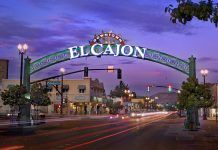City of La Mesa Environmental Program Manager Hilary Ego shared what steps the city is taking toward its Climate Action Plan during a Jan. 24 City Council meeting but at least once Council Member, Jack Shu, suggested more can be done.
The CAP was adopted by city council in 2018 and is intended to serve as a roadmap to reduce pollution in the form of greenhouse gasses. The city aims to address measures it can take to reach CAP goals within five key areas: energy, transportation, solid waste, green infrastructure and water.
In an effort to more aggressively address pollution, the city later adopted an emergency climate resolution followed by a resolution response on Jan. 25, 2022.
Two quantifiable goals are laid out: La Mesa was supposed to reduce emissions 15% from 2010 to 2020 and the city is supposed to reduce the 2010 emissions by 53% before 2035.
Ego, who also serves as chairperson of the Regional Climate Collaborative said greenhouse gas emissions inventories are provided by San Diego Association of Governments but they have not yet released the 2020 report to confirm whether the initial 2020 target was hit.
City staff has been collaborating with the CAP implementation team, Ego said, participating in lunch-and-learns, working with electrification recommendations and with the planning, mobility and parking commissions to include CAP-specific goals in their 2023 work plans. The city recently embarked on a community collaborative power launch in which 94% of municipal power could be generated by renewable power sources. Additionally, La Mesa businesses have been encouraged to earn their Green Business Certification and so far, Ego said, one business has completed the process and seven more are in the process of earning the certification.
For homeowners, the city has free energy measurement toolkits available for residents to self-measure their water and electricity efficiency. Over 100 residents have participated in the program since it launched in late 2019, Ego said, although she did not provide details on whether the city followed up on any changes the homeowners took to reduce the water and electricity usage after utilizing the test kits.
A new bike repair station funded by a grant from Goby-Bike was installed near the fire station as enticement for residents to reach for their bicycle instead of their car keys— the station has screwdrivers and basic repair tools, and a quick response code mounted on the station links to tips on basic bike repairs.
Additionally, the city just acquired its first electric vehicles to be used by the community development department; that change should reduce fuel costs for the city and reduce emissions, Ego said.
Still, Shu suggested the measures likely are not enough to meet CAP goals.
“I think we’ve known for over ten years that we’re not doing enough. A number of years ago the head of the California Air Resources Board testified at a SANDAG meeting on why electric cars won’t save us. Even if we convert as fast as we can, the amount of greenhouse gas reduction will not get us to the point where we can reach our targets,” Shu said.
The next set of targets, which includes further reducing emissions by 2035 are steep, he said, but the target itself is not as problematic as how the city approaches reducing emissions, how often they measure for success, and how data is applied.
“If anything, our targets should be more flexible and going in the direction of reducing greenhouse gasses. The CAP goals are not only obsolete but the targets are way off from what we need to do,” Shu said.
Essentially, he said, by striving to meet minimum goals established over a decade ago, the city is attempting to earn a ‘C’ or ‘D’ grade— just enough to pass— and the work required to make that grade simply isn’t enough to affect change. Furthermore, Shu said, the city has little data to measure whether individual initiatives are making a dent in the goals.
For example, Public Works might measure the traffic at a particular intersection prior to installing a new traffic signal, but does not measure Vehicle Miles Traveled across the city on a regular basis.
“Over the last six months, several projects were completed with the help of CivicSpark fellows who finished their fellowship in August, 2022,” Ego said, and part of their work included helping the city adopt its Urban Forest Management program in June, 2022.














